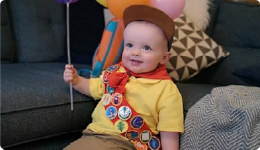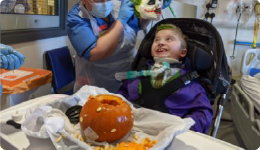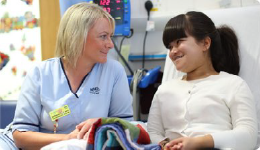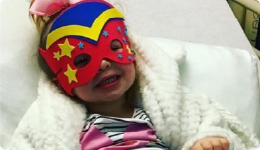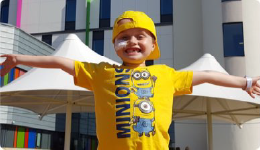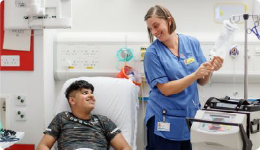- Autastic Club offers opportunities to children with ASN to explore their interests and be themselves. We are a not for profit group, here to bring families together in a safe and relaxed environment, facing challenges and celebrating differences together.
- Creatability offers a unique mix of expressive arts for neurodiverse and/or disabled children and young people with additional needs aged four to 21 years old.
- Creative Sparks Theatre Arts run an ASN Drama Club. They have specifically designed drama sessions dedicated to individuals with additional support needs, ensuring everyone has the chance to enjoy the benefits of the arts in an environment where they feel comfortable and encouraged.
- Creatovators run a play scheme for the whole family. Creatovators is a Social Enterprise with a passionate belief that people on the autistic spectrum have a lot to offer.
- Cycling
- Clyde Cycle Park provide cycling sessions where where you can borrow 2 and 3 wheeled bikes.
- Free Wheel North by focusing on the fundamental right to good physical and mental health, Free Wheel North enable people with additional support needs to enjoy their outdoor environment through cycling. They have a variety of accessible bikes you can try and provide 1:1 or small group lessons.
- Glasgow Disabled Scouts We believe that everyone is entitled to join Scouts and we provide support so that it is possible children and young adults with disabilities aged 8 to 25 to take part. They supporting children and young adults with disabilities in Glasgow to go on adventures and gain skills for life.
- Indepen-Dance is an inclusive dance charity that runs regular classes for people with and without disabilities.
- Over the Wall Camp A free place where children with long-term health conditions can rediscover the mischief and magic of childhood!
- Project Ability The Create programme engages with children and young people with disabilities in a wide range of creative activities including visual arts, film and new media.
- Solar Bear is a theatre company that does things differently. Inclusion and collaboration are at the heart of our mission. We work with deaf and hearing actors, theatre makers, artists and young people. We reach out to those often excluded from the arts.
- The Spectrum Film Club East Dunbartonshire’s inclusive cinema night specifically for those with additional support considerations at Kilmardinny house in Bearsden.
- The Yard is more than just a play centre. They’re a hub for families of disabled children and young people, offering support, connection, and a place to belong.
Physical Activity and Participation
Physical activity and participation can help you stay healthy. It also helps with your mood and sleep. Children learn about how their body works and moves through play. Keeping physically active brings many health benefits. For children, regular physical activity is important for growing up to have strong bones and muscles, maintaining a healthy weight and building their confidence.
Taking part in movement, exercise and sport from an early age can create good habits for life. Children's play can develop into sporting and fitness activities. Individual activities can be really helpful for building self esteem. You only have to compete against yourself! Team sports are a great way to stay healthy while developing social skills.
All children regardless of age or ability have the right to be active and participate in leisure activities, exercise and sport at school and in the wider community. Children and young people who have a physical disability spend increased periods of time 'sitting' compared to those who do not have a physical disability. Everyone should try to be physically active and healthy in their day to day life with purposeful, fun and competitive activities that are enjoyable.
All activities should make you breathe faster, feel warmer and stronger. They may also make your daily routines more comfortable and efficient. Find out more about physical activity and participation below:
- NHS Inform has information on the health benefits of exercise and ideas on how to keep active.
- Gov.uk has infographics about the physical activity needed for general health benefits for all children and young people.
- The World Health Organisation has guidelines on physical activity, sedentary behaviour and sleep for children under 5.
Activities in your Local Area
- National:
- AccessAble - gives you detailed information to work out if a place is going to be accessible to your child/young person. Their Detailed Access Guides lets you know what access will be like when you visit. It looks at the route you will use to get in and what is available.
- Aliss - helps you to find services, groups and activities for health and wellbeing across Scotland.
- Sport Disability Scotland - can help you to find Sport and physical activities in Scotland that are welcoming and inclusive for participants with disabilities.
- Sport Scotland - can help you find sports clubs or community sports hubs in your area.
- Local:
Developing Skills
Children and young people develop skills in their own time. Some children and young people take longer to learn some of these skills. Below you will find information and activities to support you to teach ball skills and bike riding.
Ball Skills
General Hints and Tips
Ball skills are a very complex set of skills to learn. Children who find ball skills difficult need lots of practice so vary the activities you try so that they don’t get bored. Always finish on a positive note with them having some success to avoid frustration. You might need to make the activity easier to allow them to succeed.
Grading
Children learn best when they participate in activities that are just the right challenge, not too easy or too difficult. You can grade ball skills activities by:
- Starting with activities where either the child or the ball are still (such as: throwing, catching or kicking a ball) and then move to activities where both the child and ball are moving (dribbling a football, running and throwing/catching a ball).
- Use items other than balls for throwing and catching like bubbles, balloons, scarves. These also fall more slowly so are easier to catch.
- Try soft air filled balls with a bit of “give” like a beach ball.
- Start with big balls and heavy bean bags and work towards lighter smaller balls.
- When using targets, start big and work towards smaller targets.
- Start by standing near the target or each other and then increase the distances involved.
- Start with the ball moving slowly then increase the speed that the ball travels at.
Activity Ideas
Throwing to Target
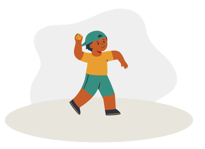 Roll Balls into a Goal - start with a large goal and work towards a box.
Roll Balls into a Goal - start with a large goal and work towards a box. - Skittles - try and roll the ball to knock down the skittles. Start with a big ball close to the skittles then increase the distance the child rolls from. Then decrease the size of the ball.
- Sock Ball - make some balls from rolled up socks or use bean bags. Throw them into a hoop or ring marked on the floor. Increase the distance the child throws from as they improve. Then try throwing them into boxes of varying sizes. You could use a bin, a lunch box, laundry basket, ice cream tub or anything else you can find.
- Shooting Hoops - Hold a hoop at your child’s shoulder height. Get them to throw a bean bag or soft ball into the hoop. Raise the height of the hoop, get them to throw from further away or use a smaller hoop to challenge them.
Catching
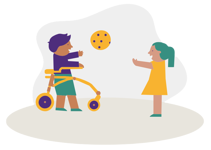 Throw and Catch - Ask your child to throw a bean bag up in the air (to eye level) and then catch it with both hands. Repeat this 10 times. If this is really easy they should try throwing higher and then throwing and catching with one hand.
Throw and Catch - Ask your child to throw a bean bag up in the air (to eye level) and then catch it with both hands. Repeat this 10 times. If this is really easy they should try throwing higher and then throwing and catching with one hand.- Bounce and Catch - Ask your child to bounce a large ball off the floor and catch it with two hands. Repeat this 10 times. If they find this easy reduce the size of the ball until your child can catch a tennis ball. Try bouncing and catching with one hand. You could also try bouncing the ball off a wall and trying to catch it.
- Kneeling Catch - Ask your child to kneel on the floor make sure their bottom is not on their heels. Kneel down in front of your child and throw them a ball. Encourage them to reach out to catch the ball. Repeat this 10 times.
- Catch - Practice with a large soft ball and throw underarm back and forth, add a bounce, try it against a wall. Try clapping and catching. Practice catching with one hand then the other.
Football Skills
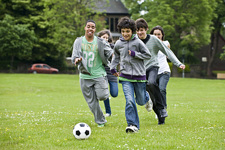 Kicking - Practice kicking with one leg then the other. Once they can do this kick the ball to them and get them to kick it back. Then you can kick the ball to them while they are running and see if they can kick the ball.
Kicking - Practice kicking with one leg then the other. Once they can do this kick the ball to them and get them to kick it back. Then you can kick the ball to them while they are running and see if they can kick the ball.- Penalty Kick - Ask your child to put the football on a spot and then kick it into the goal. Once they have mastered this make the goal smaller.
- Happy Feet – Get your child to place a ball between their feet and squeeze it with their toes so that it doesn’t move. Keeping the ball between their feet and keeping their knees together, get them to move one foot forward then the other so that they look like a penguin carrying an egg. They might need to stop and readjust the ball every now and then.
- Dribbling – Get your child to kick the ball very gently from one foot to the other. They should gently tap the ball with one foot so that the ball moves slowly towards their other foot. Then tap it back to the first foot. Their feet should be about shoulder width apart. Remind them to go slowly so that they can control the ball and so that it doesn’t run away from them.
- Obstacle Dribbling – They can now try dribbling the ball around obstacles. Get them to dribble the ball as above but this time dribble round things.
Other Ball Activities to try
- Balloon Volleyball - Use a balloon to bat back and forth to each other, try and bat it over/under a washing line. Try using a racket to bat the balloon back and forth to each other.
- Football, rugby and mini golf are all ideal for eye-hand coordination.
- Ball and racket games like hockey, swing-ball, tennis, badminton.
- Dodge ball where the child has to avoid the ball thrown at them – you could use any size of ball.
Learning to Ride a Bike
Learning to ride a bike is a complex task involving balance, motor skills and visual skills. It can be helpful to start with a balance bike. This technique takes time, but the idea is that your child gets a sense of achievement from mastering each step one at a time.
General Advice
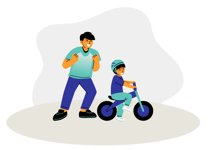 Always follow general bike safety rules when teaching your child how to ride. Make sure they wear a helmet. Practise somewhere quiet away from the road and other people. Make sure your child is visible - they have reflectors on the bike, they are wearing bright or reflective clothing.
Always follow general bike safety rules when teaching your child how to ride. Make sure they wear a helmet. Practise somewhere quiet away from the road and other people. Make sure your child is visible - they have reflectors on the bike, they are wearing bright or reflective clothing.- Teach one step at a time - use the strategies below. Don't move on to the next step too quickly.
- Think about the surface they are learning on. Grass is soft for landing on but makes it much harder to pedal. Look for a flat smooth surface to start with. Then you can try a gentle slope and eventually, uneven ground and grass.
- The weather can make learning to ride a bike harder. Try on dry days but don't forget to practice in all weathers once they have mastered the basics.
- Take time to help the child practice and reinforce the skills.
Steps for Teaching Bike Riding
You will need:
- A bike
- A helmet
- A shifting spanner
What to do:
- Lower the seat so the child can sit comfortably with both feet flat on the ground.
- Remove both pedals.
- Using a flat surface in a safe area such as a playground or quiet car park, get your child to propel themselves forward using a walking movement with their feet.
- Tell them to keep their arms rigid and to look where they are going.
- When your child has mastered steps 3 and 4, get them to propel themselves forward using both feet at the same time (whooshing along like a skier!).
- Once they can do this move to a safe slope/ gentle hill. Start by getting them to push off and then balance to go a little way down the hill and then stop by putting their feet down. As they improve, gradually increase the distance they roll down the hill. Encourage them to rest their feet on the frame of the bike.
- Next teach stopping by squeezing the brakes at the same time as putting their feet down.
- When the child is freewheeling down the slope and stopping in a controlled manner, put the pedals back on.
- Repeat steps 6 and 7, with the child resting their feet on the pedals this time.
- Introduce the pedalling action. If the child has difficulty with moving one foot then the other (reciprocal movement), try taking the pedals off and repeat step 5, but moving one foot then the other rather than both together.
Resources
Cycling Scotland have Play on Pedals online support for parents teaching their children how to ride a bike.
There are community resources in the Glasgow and Clyde area that can help you teach your child how to ride a bike.
- Bike for Good refurbish, repair and teach communities how to maintain bicycles; once you have the skills a bike is for good. They use the bike to do good actions, improve the environment, teach skills and improve mental and physical health.
- Child Accident Prevention Trust has some cycle safety information.
- Clyde Cycle Park the first international-standard, closed-road cycling training and racing facility in the West of Scotland
- Drumchapel Cycle Hub are a volunteer-led community project supported by the Drumchapel Sports Hub and a community cycling club affiliated with Cycling UK. They aim to make cycling activities inclusive and accessible for people of all ages, learning styles and abilities by providing affordable bike hire, cycling skills sessions and supported group rides, as well as our children's and family cycling activities to help support a healthy and active lifestyle.
- Free Wheel North is a cycling development charity working towards creating a fairer, healthier society by enabling people of all ages and abilities to cycle as part of their everyday life.
- The Inverclyde Bothy run family cycling events and can help you with bike maintenance.
- Play Together on Pedals encourages pre-school children and their families to become active, enjoying the fun and freedom of cycling together.
- Wee Wobblers provides balance bike and pedal bike training for children.
- Able2Sail
- Adaptive Rowing
- Boccia
- British Para Table Tennis
- Disability Archery
- Disability Badminton
- Disability Gymnastics
- Disability Martial Arts
- Disability Snowsport UK
- Disability Sport Glasgow
- Disability Tennis
- Disability Triathlon
- Frame Football Scotland
- Glasgow Eagles Sports Club
- Greenock Otters Swimming Club
- Inclusive Surfing Scotland
- Paddle Scotland
- Para athletics
- Paraclimbing
- Para-cycling
- Para-Football
- Paralympics
- Para Swimming
- Riding for the Disabled Association
- Sailability
- Scottish Para-football
- Scottish Women Warriors
- Special Olympics Great Britain
- SurfABLE Scotland - Friendly Access
- The Sporting Aces
- West of Scotland Wheelchair Sports Club
- Wheel Power
- Yogability



